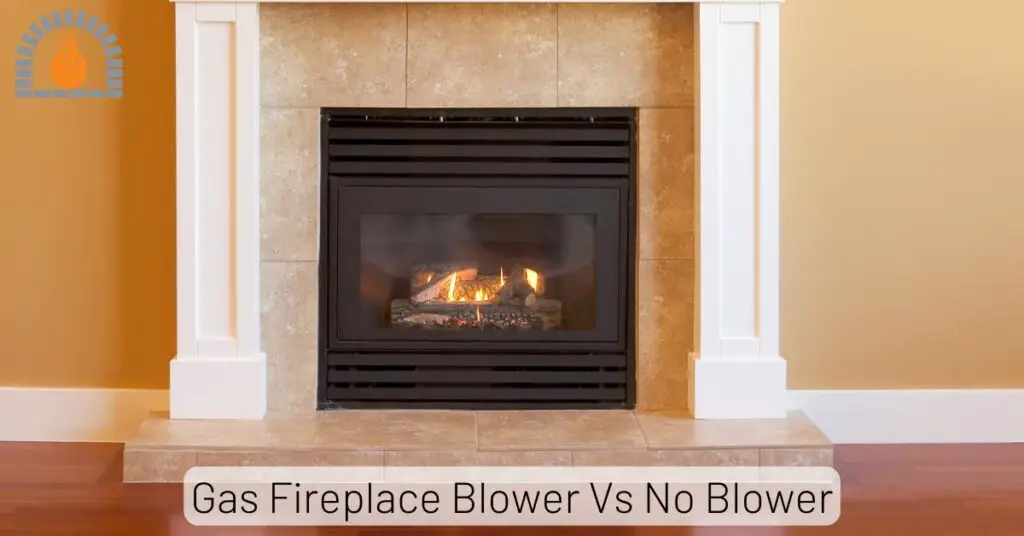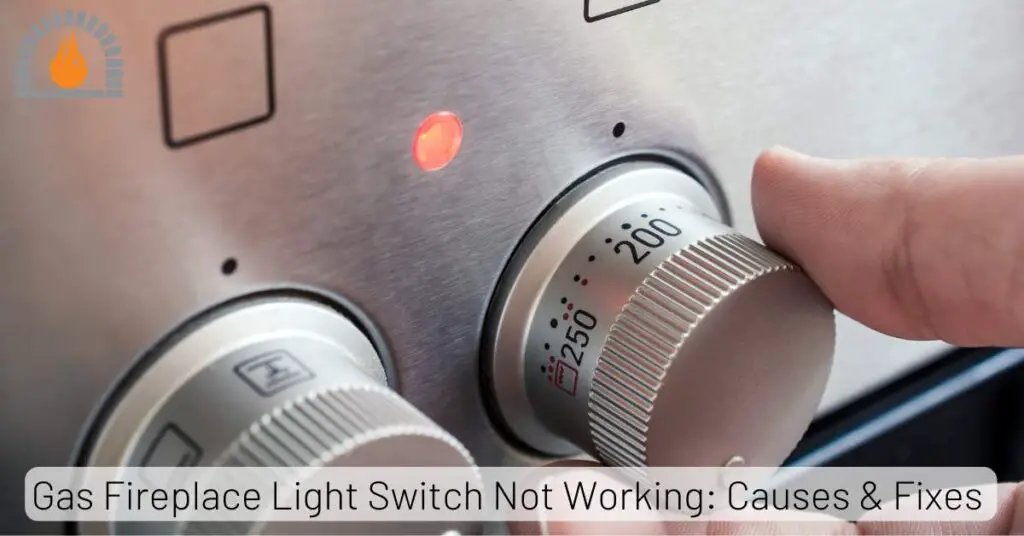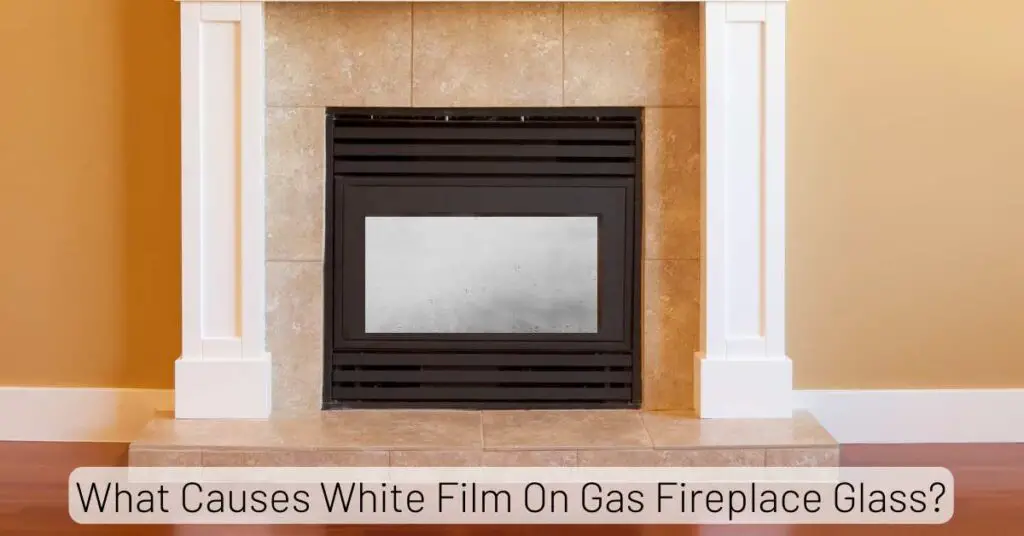With the increasing trend of transforming patios into cozy, all-season outdoor living areas, patio heaters have become a must-have. However, maintaining the correct patio heater clearance around is essential to prevent fire hazards and ensure optimal performance.
Insufficient clearance can lead to severe safety risks, such as overheating nearby objects and even causing fires. Understanding and following these clearance guidelines can help you enjoy your heater without compromising on safety.
How Much Clearance Does a Patio Heater Need?
Patio Heater Need Maintain at least 4-5 feet (1.2-1.5 meters) from the ceiling or any overhead combustible materials. Keep a clearance of at least 3 feet (0.9 meters) from walls and other combustible materials such as furniture, awnings, or curtains. This distance helps prevent fire hazards due to excessive heat accumulation.
Clearance Requirements for Patio Heaters
Gas Patio Heaters
- Ceiling Clearance: A minimum of 4 feet (about 1.2192 m) from the ceiling is typically required. Using a heat deflector can reduce this clearance to around 14 inches (35 cm) above the heater.
- Side Clearance: Maintain at least 3 feet (1m) from any walls or other combustible materials.
Electric Patio Heaters
- Ceiling Clearance: Generally, mount electric heaters at least 3 feet (1m) from the ceiling, though certain models may allow closer installation based on their design.
- Side Clearance: Maintain a side clearance of around 1.5 feet (18 inches) from nearby walls.
Wood Patio Heaters
- Minimum Distance: Maintain at least 5 feet (1.5 meters) from the ceiling or any overhead combustible materials. This distance helps prevent fire hazards due to excessive heat accumulation.
- Side Clearance: Keep a clearance of at least 3 feet (0.9 meters) from walls and other combustible materials such as furniture, awnings, or curtains. This is essential to avoid heat exposure that could ignite flammable items
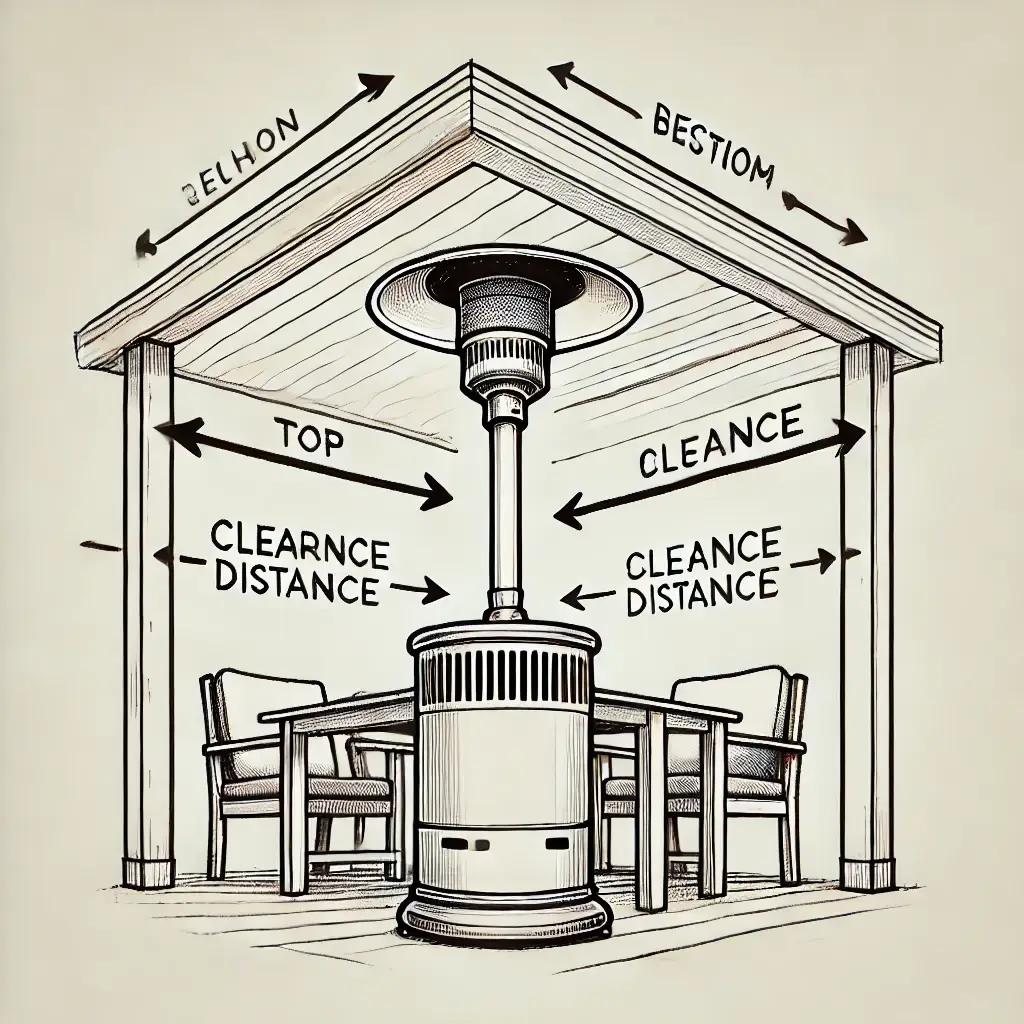
General Safety Guidelines
Ensure at least 25% of the area remains open when using gas heaters, allowing proper ventilation and reducing carbon monoxide buildup.
For all heater types, maintain at least 3 feet (91 cm) of distance from combustible materials such as wood, fabric, or other flammable items.
When using a heater under a covered patio, verify it is designed for semi-enclosed spaces, as some heaters may have reduced clearance requirements in such settings.
Always refer to the manufacturer’s guidelines for specific clearance recommendations, as these can vary widely across different heater models and brands.
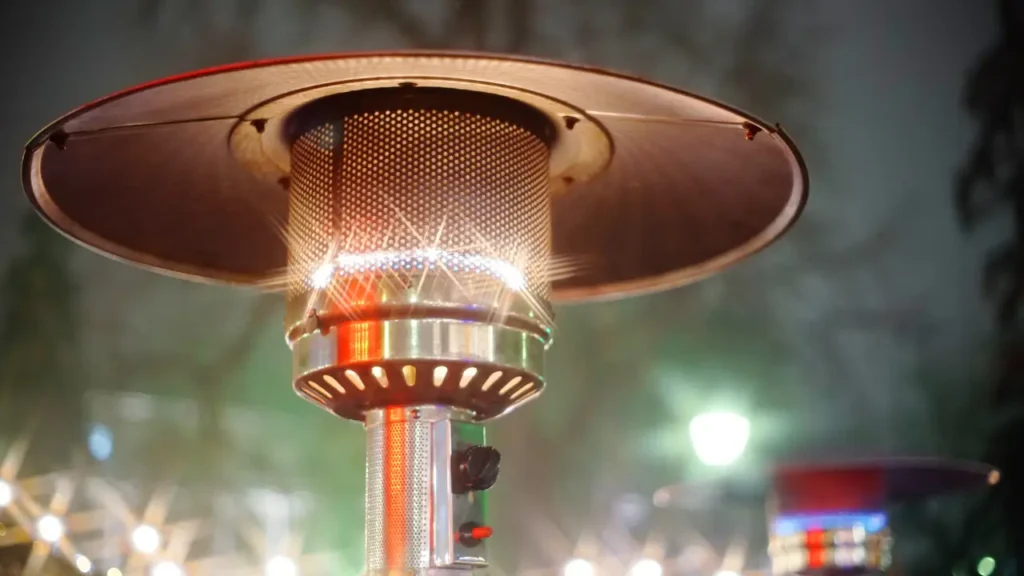
Patio Heater Clearance Measurment Chart
| Heater Type | Overhead Clearance | Side Clearance | Floor Clearance (if applicable) |
|---|---|---|---|
| Freestanding Gas | 48 inches | 36 inches | N/A |
| Freestanding Electric | 36 inches | 18 inches | N/A |
| Tabletop Gas | 24 inches | 18 inches | N/A |
| Wall-Mounted Electric | 12 inches | 6 inches | 48 inches |
| Ceiling-Mounted Gas | 48 inches | 36 inches | 72 inches |
- Overhead Clearance: The vertical distance between the heater and any ceiling or covering above.
- Side Clearance: The horizontal distance between the heater and nearby walls, objects, or people.
- Floor Clearance: For wall-mounted heaters, the minimum distance between the heater and the ground.
Why Clearance Matters for Patio Heaters
The clearance required around a patio heater isn’t just a recommendation; it’s a vital safety measure. These heaters generate significant heat, and without the proper distance, nearby structures, furniture, or plants can become fire hazards.
Adequate clearance also ensures that the heater operates efficiently, allowing heat to disperse evenly around the area. Plus, compliance with safety regulations is essential for liability and protection.
Patio heaters should never be placed directly next to furniture, walls, or decorations, as they can pose fire hazards. Aim to keep at least 24 inches of distance between the heater and any objects or seating areas, providing enough space for heat to circulate safely.
Factors Influencing Clearance Needs
Several factors impact the clearance needed around a patio heater:
-
Heater Type: Different types of heaters (e.g., freestanding vs. tabletop) require varied clearances due to their power output and design.
-
Heater BTU: A higher BTU (British Thermal Unit) rating means more heat output, often requiring increased clearance.
-
Outdoor vs. Enclosed Spaces: Enclosed spaces like covered patios need additional clearance and ventilation to prevent heat buildup and gas accumulation.
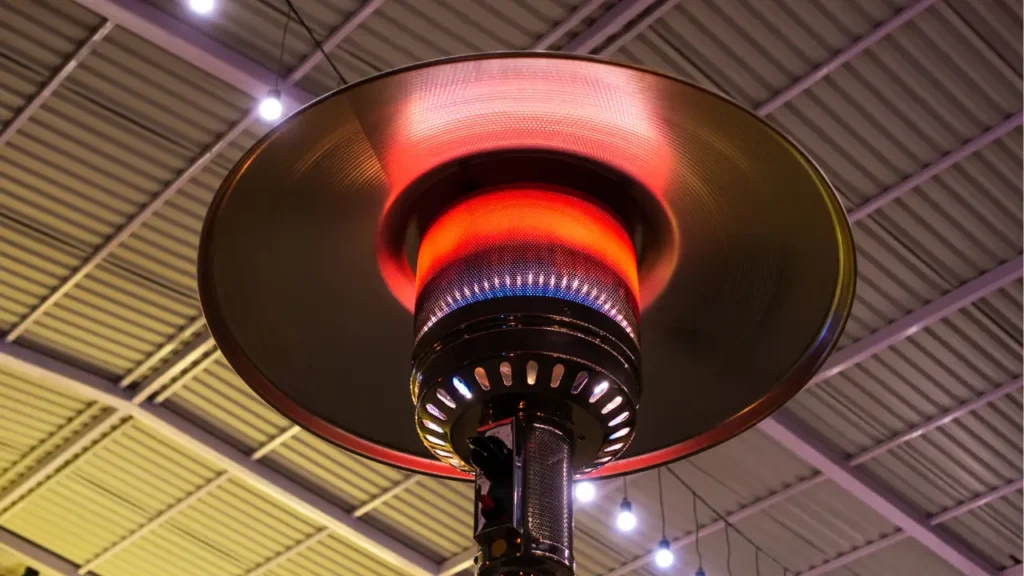
Safety Precautions
-
Ensure no combustible materials are directly above the heater.
-
Items like outdoor cushions, drapes, or decorations should be positioned far from the heater.
-
Avoid placing heaters in areas with high wind, as this can lead to unstable flames or inefficient heating.
-
Using patio heaters in enclosed spaces such as gazebos, pergolas, or covered patios can be tricky. These areas require additional overhead clearance and ventilation to disperse fumes effectively.
-
When positioning a patio heater in an enclosed space, follow the manufacturer’s recommendations for ventilation and consider using electric models, which are typically safer in closed areas.
FAQs
What happens if my patio heater doesn’t have enough clearance?
Insufficient clearance can lead to overheating, increased fire risks, and reduced heater efficiency. This can be particularly dangerous if the heater is close to combustible materials.
Can I use a patio heater under an awning?
Yes, but only if you ensure enough overhead clearance and proper ventilation. Gas heaters are generally not recommended under enclosed structures.
How much clearance do gas heaters need compared to electric heaters?
Gas heaters typically require more clearance around 36 inches overhead while electric models may need as little as 24 inches due to lower heat output.
What should I do if it’s windy while my patio heater is running?
High winds can destabilize the flame on gas heaters, so it’s best to turn off the heater if winds are strong.
Are there clearance differences for enclosed spaces like pergolas?
Yes, enclosed spaces often require additional clearance and ventilation, and electric heaters are usually recommended in such settings due to safety concerns.
Affiliate Disclosure: Fireplaceadviser.com is a participant in the Amazon Services LLC Associates Program. We may earn a commission when you click on certain links on this site and purchase.

Hello!! I am Jamal Khan. I often fix my home electric heaters and gas stove problems and research the common issues in the heating units to improve my knowledge and expertise. The aim of establishing fireplaceadviser.com is to share my expertise and knowledge with my audience.








